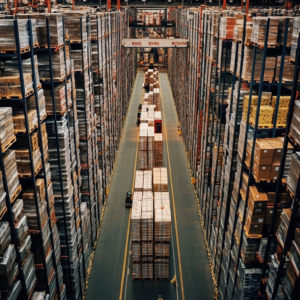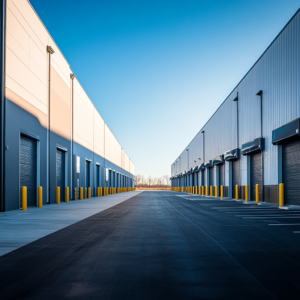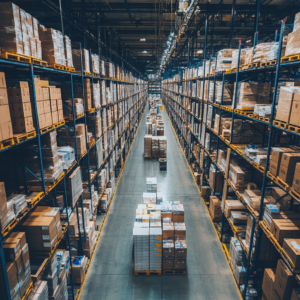The Northeast United States is a vital region for logistics and warehousing due to its dense population, proximity to major markets, and well-established transportation networks. The region’s highways, railways, and seaports offer significant advantages for efficient supply chain management, making it an ideal area for logistics operations. Here are the best locations in the Northeast for logistics and warehousing distribution points, highlighting the most effective routes for trucking, rail, and sea transportation.

New York/New Jersey Area: A Major Logistics Hub
The New York/New Jersey area is one of the most significant logistics and warehousing hubs in the Northeast. Its central location provides easy access to a vast consumer base, making it ideal for distribution. Major highways such as I-95, I-78, and I-80 intersect the region, facilitating efficient trucking routes to key markets along the East Coast and beyond. These highways support the rapid movement of goods, reducing transit times and costs for businesses operating in the area.
The Port of New York and New Jersey is a critical asset for the region, serving as one of the busiest container ports in the United States. This deep-water port handles a significant volume of international cargo, particularly from Europe and Asia, making it a vital gateway for global trade. The region is also well-served by an extensive rail network, with CSX and Norfolk Southern providing crucial freight services that connect the area to major markets across the U.S. and Canada.
Philadelphia, Pennsylvania: Strategic Location with Robust Infrastructure
Philadelphia is another key logistics and warehousing location in the Northeast, benefiting from its strategic location and well-developed transportation infrastructure. The city is served by major highways like I-95, I-76, and I-476, which provide efficient trucking routes to markets in the Mid-Atlantic region, the Northeast, and the Southeast. This connectivity ensures rapid distribution of goods across a wide geographic area, making Philadelphia an ideal hub for distribution centers.
Philadelphia’s logistics capabilities are further enhanced by the presence of the Port of Philadelphia, a major deep-water port that handles a diverse range of cargo, including containers, bulk goods, and automobiles. The city’s rail infrastructure, served by CSX and Norfolk Southern, provides efficient connections to national markets, supporting intermodal logistics operations. Additionally, Philadelphia International Airport supports substantial cargo operations, making the city a comprehensive logistics hub.
Boston, Massachusetts: A Key Northeastern Logistics Hub
Boston is a critical logistics and warehousing location in the Northeast, particularly for businesses looking to serve New England markets. The city is well-connected by major highways such as I-90 (the Massachusetts Turnpike), I-95, and I-93, which provide efficient trucking routes to key markets across New England, New York, and beyond. These highways facilitate the quick movement of goods, making Boston a strategic distribution point.
Boston’s logistics capabilities are bolstered by the Port of Boston, a major seaport that handles a wide variety of cargo, including containers, automobiles, and bulk goods. The port’s location on the Atlantic coast makes it a vital gateway for international trade, particularly with Europe. Boston is also served by an extensive rail network, with CSX and Pan Am Railways providing essential freight services that connect the city to national and international markets.
Baltimore, Maryland: A Strategic Mid-Atlantic Hub
Baltimore is a key logistics and warehousing hub in the Northeast, primarily due to its strategic location and access to a major port. The city is intersected by important highways like I-95, I-70, and I-83, which provide efficient trucking routes to key markets in the Northeast, Southeast, and Midwest. Baltimore’s highway network supports the rapid distribution of goods, making it an attractive location for logistics operations.
The Port of Baltimore is a significant asset for the region, serving as one of the busiest ports in the United States for handling automobiles, roll-on/roll-off cargo, and bulk goods. The port’s deep-water facilities and advanced intermodal capabilities make it an ideal location for businesses looking to optimize their supply chains. Additionally, Baltimore is well-served by rail, with CSX and Norfolk Southern providing efficient connections to major markets across the country.
The Northeast United States offers several strategic locations for logistics and warehousing distribution points, each with unique advantages. The New York/New Jersey area, Philadelphia, Boston, and Baltimore stand out due to their excellent highway, rail, and sea connectivity, making them ideal for optimizing supply chain management. By choosing the right Northeast location, businesses can enhance the efficiency and cost-effectiveness of their logistics operations, ensuring timely distribution to key markets across the U.S. and internationally.




